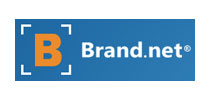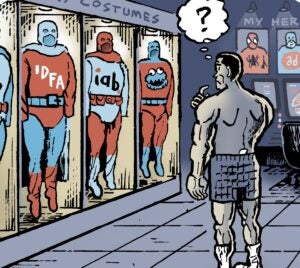 Brand.net announced yesterday a $14 million Series C round of funding led by Focus Ventures, with participation by existing investors InterWest Partners and Norwest Venture Partners. Read the release.
Brand.net announced yesterday a $14 million Series C round of funding led by Focus Ventures, with participation by existing investors InterWest Partners and Norwest Venture Partners. Read the release.
Brand.net CEO Elizabeth Blair discussed her company’s new funds and plans for the future.
AdExchanger.com: What will the new funds be used for?
EB: Expanding agency adoption of our proprietary online Media Futures PlatformTM. Andy (Atherton, COO at Brand.net) and I are very fortunate; InterWest and Norwest (our A and B round investors) 100% supported building the platform in a smart and scalable way from the start, frontloading the technology investment versus the proverbial “throw bodies at it”. We’ve been in the market, with the biggest brand advertisers and agencies on the planet, “doing it right” for two years. That has given us an enormous time to market advantage, and by collecting and analyzing data on every campaign trafficked from day 1, the biggest independent brand campaign data asset in the industry.
Working with Brand.net, brand advertisers and agencies have the ability to plan, purchase and manage web-wide media buys up to twelve months in advance. On the quality side, we’ve offered SafeScreenTM, proactive page-level filtering, on every campaign we’ve run for 18 months. On the campaign management side, we guarantee in writing impressions, price, reach to target, smoothness and breadth of delivery, and we have had over 99% accuracy in delivery over the past two years. Finally, Nielsen and comScore studies continue to confirm that Brand.net’s campaigns drive the highest offline sales ROI on the Internet. Our campaigns sell real products to real customers at high margins. That’s true success to true brand marketers.
With Focus’ investment, we can make our footprint bigger in several ways. First, cover more agencies, more geographies and more verticals than we’ve been able to thus far. Second, continue to expand our format offerings, as we most recently did when we added pre-roll video to our product mix. We entered video because agencies were asking when we would “do for video what you do for display”; as digital media keeps converging there are more great opportunities to address. Finally, and perhaps saving the best for last, respond in a bigger and faster way to an increasing stream of requests from agencies to offer applications that allow them to access our forecasting, analytics and management tools more seamlessly, either directly or integrated with their proprietary demand side platforms.
We are thrilled that this latest round of investment will allow us to tackle all those opportunities in parallel.
Why is Focus Ventures a good match for Brand.net for leading this round?
We love the team at Focus, what they do and how they do it. Two specific things I’d call out, interrelated. First, Focus is held in high regard by our previous investors InterWest, Norwest, and Dave Strohm. They are straight shooters who do what they say and say what they do. Second, we need to stay laser-focused on our business – our customers and the market opportunity – so we need investors who demonstrate (in actions not just words) up front that their #1 priority is to keep us executing with spending customers. We had rave reviews on Focus in that regard, and the process from first meeting to signing the definitive documents was fantastic – smooth, non-distracting, completely professional. Focus is absolutely the right match for the Brand.net team.
What’s Brand.net’s positioning today? Are you an ad network, a DSP, both – an agency?
We are an advertising platform that our customers, primarily agencies representing the top brand advertisers in the US, use to manage their web wide brand intent campaigns. “DSP” is (or perhaps was) the word of the moment, but it is so broad a term that it can apply to a wide variety of companies with a wide variety of capabilities. I prefer to focus on our target customers and their core marketing needs. Our target customers generate on average 95% of their sales offline, in brick and mortar stores – CPGs and big box retailers, quick serve restaurants, pharmas, entertainment companies among them. A straightforward, accurate definition of “success” for them is proof that they are selling more products, at a higher margin, on a sustained and sustainable basis, than they are doing today.
So what is the biggest challenge to achieving that “success” using online media today? I’d say an explosion of “media opportunities” that, while nominally terrific, were not matched with an explosion in either headcount or technology. In just the past few years these marketers, who already may be juggling dozens of brands in dozens of geographies, have seen an unending stream of new media, new formats, new buying capabilities, new data availability and analytics. However, the economy has dictated flat headcount, at best, across marketing departments and advertising agencies.
Technology should step in, but in brand marketing it hasn’t. Silicon Valley has been extremely good at two things: (1) what at Yahoo! we called “Audience” – consumer facing media/content (e.g. YouTube, Facebook, Twitter, everything Apple) – much of which actually creates fantastic environments for brand marketing. However (2) for what we called “Monetization”, the Valley has gone gangbusters on one piece of it – direct response ad technology – and has made virtually no progress on brand ad technology, certainly not brand ad technology that works across the ever-broadening pool of publishers, media, formats and opportunities.
The irony is that a venture capital and technology community that claims to be “all about the math” is failing to serve the biggest piece of the marketing pie. 2/3 of marketing spending in the US is intended to drive awareness, consideration and preference. And again, on average 95% of those transactions will occur offline, in a brick and mortar store. “Success” is proof that brand marketers can use online advertising to sell more products at a higher margin on a sustained and sustainable basis than they are doing today. Can that success be defined numerically? Absolutely, by showing more sustainable sales at higher sustainable margins. Is it possible to architect a scalable, web-wide ad platform that delivers and proves it with respected independent third party verification? Yes, and that is what the Brand.net team focused on 100% from day 1. That is who we are, and that is what our customers look to us and trust us to do. Our growth is a reflection of listening to, understanding, and meeting the needs of brand advertisers and agencies.
With the Media Futures Platform, are you ready to say that advertising is becoming like the financial markets? How do your brand marketers react?
The advertising market has been becoming more efficient and effective for some time. Beyond that I think the analogies between the advertising market and financial markets are overused (often incorrectly), so I try to be both careful and specific when I make them.
Again I start with our target customers and their core marketing needs. On average 95% of their sales occur offline, in brick and mortar stores. They need to prove they are selling more products, at a higher margin, on a sustained and sustainable basis, than they are doing today. It surprises most people what a big percentage “media” is of the controllable cost structure for CPGs, retailers, quick serve restaurants and the like. It is right up there with key inputs like wheat, packaging, transportation and electricity. These companies have complex operating structures and supply chains, and increasingly we are seeing them bring best practices to media buying. In many instances, central procurement has now taken over co-ownership of media purchasing with the CMO and the media agency of record.
One immediate result is an increase in futures planning and analytics, and in actual forward media-buying. Because our proprietary online Media Futures PlatformTM permits brand advertisers and agencies to plan, purchase and manage web-wide media buys up to twelve months in advance, we are getting strong traction with many large brands, and the agencies that represent them. Their reaction has been great. Our brand customers, faced with exploding opportunities to market online, and the gap in technology, data and expertise to allow them to do so successfully, are excited by what we are doing together. In several cases they approached us with ideas about how to do things better, faster and smarter, they are actively engaged in prototyping our next generation of products, and their interactivity lets us build the best possible solutions for their marketing needs. All the incentives are aligned, and we win together, and that makes it fun and successful.
By John Ebbert













